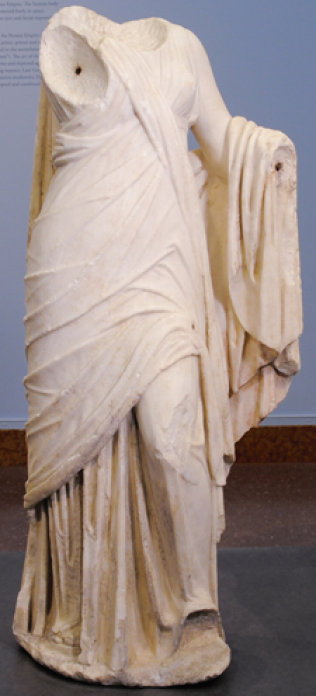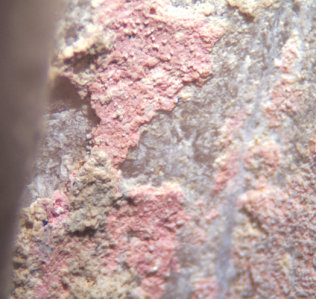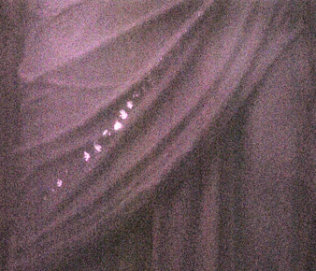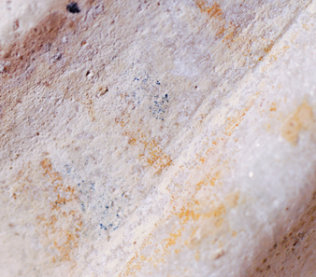Polychromy of Hellenistic Sculptures and Terracottas
Contact: Dr. Clarissa Blume
clarissa.blume@rub.de
The polychrome appearance of Hellenistic terracotta figurines is determined almost exclusively by its colouration. Their surfaces were not decorated with different textures and only in few cases were additional attributes added to their hands with the help of holes. Since those attributes are missing today, the material used for them is unknown.
Like sculptures of earlier eras we also have to consider the sculptures of the Hellenistic times as complex colourful works which shaped the common living environment of the Hellenistic cities. Their polychrome appearance was characterised by three basic elements. Firstly, the overall coloured effect of a sculpture was defined by the material used, its specific surface appearance, and from the sculptors specific texture. Secondly, the colourfulness was influenced by the colour version which colourized the sculptural body and broadened its details. Thirdly, numerous Hellenistic sculptures were fitted with attributes made of different materials such as earrings, which were once suspended in the still visible earlobes. The overall polychrome picture of Hellenistic terracottas is mainly determined by their colour version. Their surface was not furnished by any textures and only a few terracottas received attributes that were attached via a hole in their hands. These attributes do not exist anymore and the material remains unidentified.
Consideration of the coloured additions
The aim of studying the polychromy of Hellenistic sculptures is to clarify the original appearance of the statues and figures. Furthermore the research aims to analyse the additional value of the polychrome differentiation for the interpretation of presentation. The question is not how much information was carved into the stone, but how the coloured additions were facilitated and taken into account by ancient and modern day observers.The Executing Craftsmen
Finally, the focus of research activities examines the executing craftsmen. Even if it is not yet possible to distinguish specific artisans we still learn a lot about them in several antique texts. Especially illuminating is the study of names, fees and work utensils that are specified in the accounts of Delian sanctuaries conveyed in inscriptions.This research was initiated during the course of a master’s thesis about the polychromy of Hellenistic terracotta figurines and expanded to a dissertation on the polychromy of Hellenistic sculptures.




